The first stop on our weekend getaway was the last stop on the National Express coach, Southsea. After a brief stop at Portsmouth (which is only about a 10 minute drive away, at most) where all of the other passengers except for my wife and me disembarked, the coach pulled up in front of a vaguely futuristic but well-worn strip of buildings with a small amusement park behind them. While the overall aesthetic is mid-century futuristic, I was most impressed by the “Jurassic 3001” sign that looked to be in an advanced state of decay and was adorned with a CCTV camera:
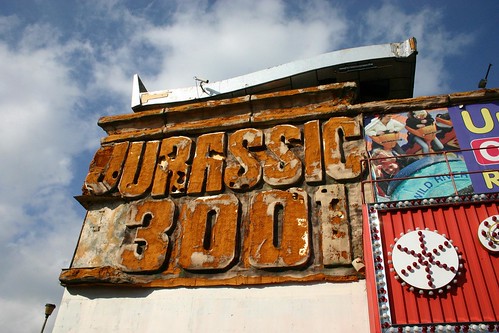
Because the pier at Southsea isn’t very big, its certainly not an attraction in itself (for more thorough coverage of English seaside decay, take a look at this post on Fantastic Journal or this one at Mondo a-go-go). The real attraction in Southsea is the hovercraft! I was thrilled when I discovered it was possible to take a hovercraft to the Isle of Wight, and it is quite a bit cheaper than the other ferry. Unfortunately, the interior of the hovercraft left a lot to be desired and made the National Express coach seem fairly luxurious in comparison. It also reeked of diesel.
Still, floating on a cushion of air across the sea at high speed is pretty cool.
The hovercraft lands in the town of Ryde. It is the largest town on the Isle of Wight, with a population of around 30,000. The hovercraft, being the technological marvel that it is, sets you down on dry land and bypasses the adjacent pier (in the background above). It’s the 4th longest pier in the UK and also one of the oldest, which has earned it listed status. It’s from this pier that you can take the “train” (yes, it’s actually part of the National Rail network) 8 1/2 miles around the eastern part of the island:
You may recognize the carriages, they are retired 1938 London Undground stock. They run two at a time on a single track to 8 stops.
Disembarking in Sandown, many shops seemed to be closed. There are lots of tourist gift places, shoe stores, and restaurants that I wouldn’t want to eat at. There was also this person trying to sell their dogs via a sign on the door of a shop:
After an unfortunate experience with the B&B we booked, we ended up at the decidedly non-luxurious but clean Sandringham Hotel. It faces the beach and the staff members have to wear nautical uniforms while serving breakfast, so it was nearly perfect (despite the avocado green bathtub with a spot of duct tape and the lack of a shower). There was a cover band playing to a very small crowd at the bar, the whole scene pulled from a yet-to-be-made Christopher Guest film.
The best thing to do on the Isle of Wight, now that the Wax Works/ Brading Experience has closed, is to either visit English Heritage sites, go hiking or watch documentaries in your hotel room about thatched cottages. We did all of these things. Osborne House, Queen Victoria and Prince Albert’s gorgeous island home, was spectacular:
I was particularly impressed with the wrapped statues, as I have started to collect photos of them. If you are interested in going to Osborne House in the winter, make reservations ahead of time. You must be a guided tour and they are limited to groups of 20. The upstairs was closed for repairs. There are more of my photos of the house here on Flickr.
Then it was on to Carisbrooke Castle in Carisbrooke, near Newport. It was restored in the Victorian era and is also an English Heritage site. Located at the top of a hill, the castle offers spectacular views of the surrounding towns and countryside.
One of the things it is best known for is the well that is powered by a donkey walking on a wheel. There are a few demonstrations each day. Here is the obligatory photo:
From there it was off to the west of the Isle for a hike across Tennyson Down, where the poet used to walk on a daily basis. There is a large monument to Lord Tennyson at the highest point on the walk, which is particularly impressive late in the day. This photo could be straight out of a Christian inspirational calendar:
We continued walking to the end of the Island and saw the famous Needles:
On the way out of the park after seeing the Needles, I couldn’t resist this amazing front yard display. Note the many messages to visitors:
The following day was less cooperative, as far as the weather was concerned. After a brief stop at the Brading Roman Villa it was back to the mainland. Portsmouth, which has accurately but not very creatively chosen to call itself “The Waterfront City” (as if it were the only one) has attempted to re-brand itself with a massive seafront regeneration project known as Gunwharf Quays:
That tower in the background is a tower that you can’t miss, mostly because it is so ugly. One of many oval-shaped residential towers with blue glass to sprout up around the world in recent years, it is known as “No. 1 Gunwharf Quays” and was designed by architects Scott Brownrigg to resemble a funnel (I can only imagine the crit you would get in architecture school with an idea that brilliant). The other tall thing in the regeneration area is the Spinnaker, a ridiculous folly that attempts to compete with Dubai (at half-scale) and has had a broken lift since its opening nearly five years ago:
As if going the Cadbury (Kraft?) and Marks and Spencer Outlet shops wasn’t exciting enough, you can sip your Costa cappuccino while admiring this jauntily-painted World War II torpedo:
While Gunwharf Quays has been branded as a total success, it is hard to see what it is doing for the rest of the city. It’s not well connected to the city center for the pedestrian, and the massive underground car-park promotes the overall suburban feel. Most of the shops are interchangeable with what you would find at any other similar mall elsewhere in the world. I am sure it’s been a financial success for the developer, though I’m not sure 2009 was the best time to open a high-end residential tower in a struggling city. While the overall development has opened up the waterfront to the public (it was formerly a naval base) you never escape the feeling that you are in a shopping mall.
I couldn’t possibly say it better than this CABE case study: It is a collection of experiences that brings together various types of housing in a carefully considered, safe environment…
As soon as you leave the front gate it’s back to reality:

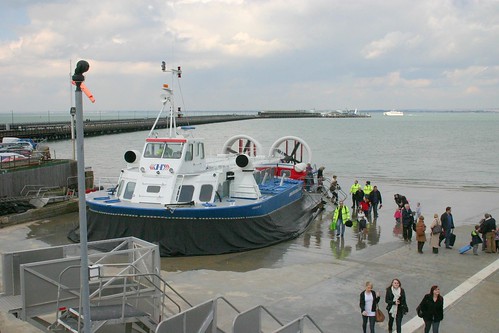




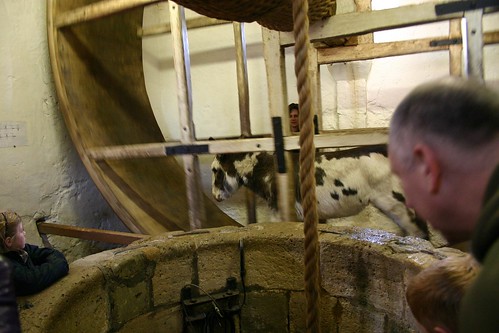
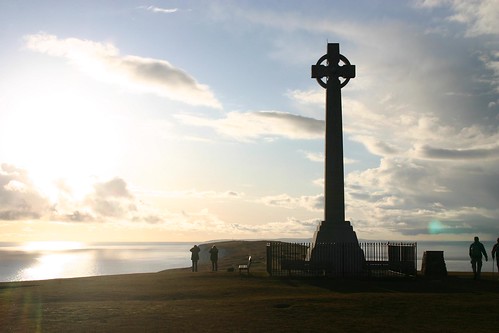


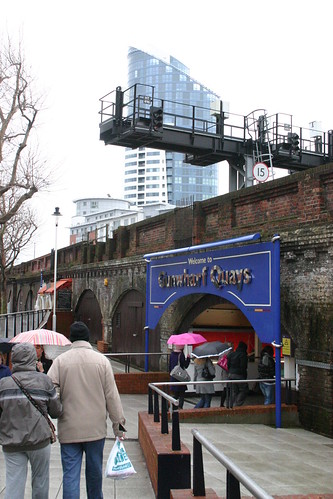
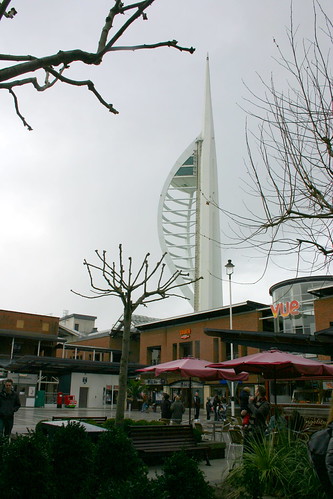
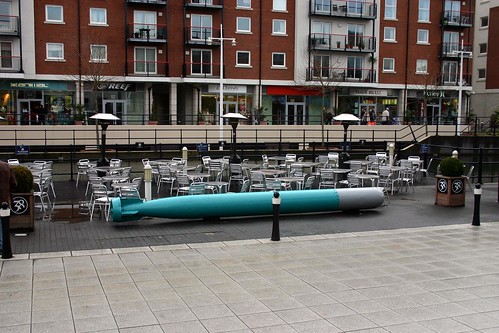

1 comment
Comments are closed.